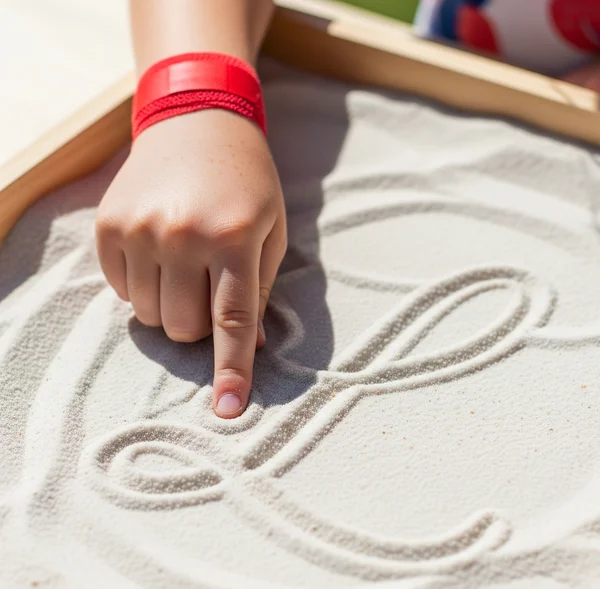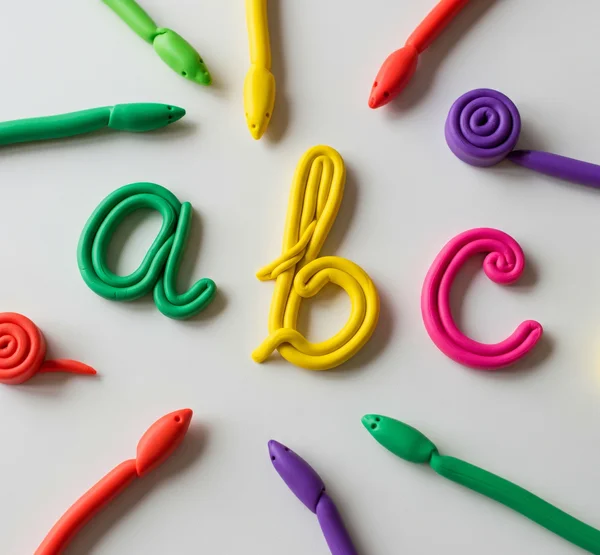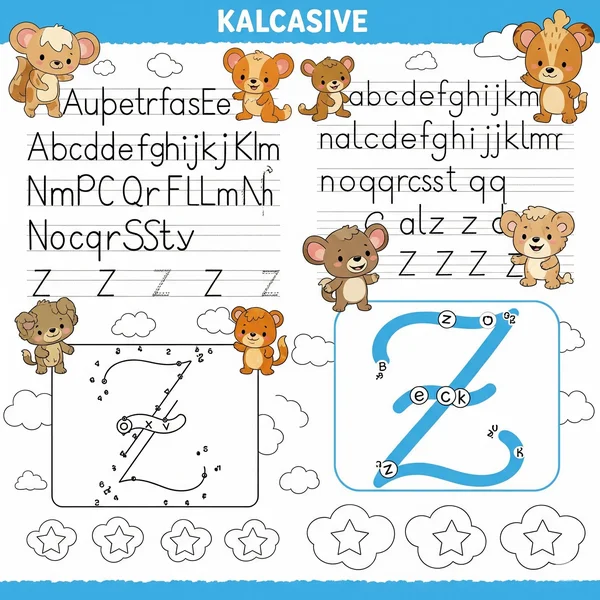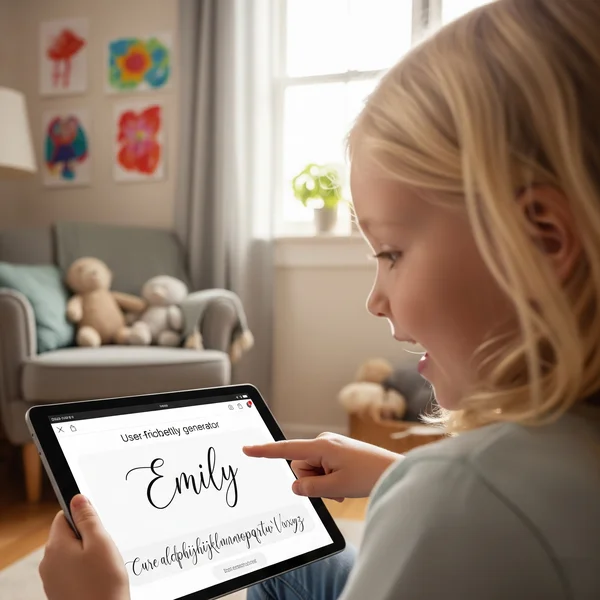Cursive for Kids: Fun Ideas for 3rd Graders & Beyond
Is it time to introduce your child to the flowing world of cursive? Teaching cursive can feel like a challenge, especially when competing with video games and tablets for their attention. How to teach cursive to kids in a way that's engaging and not a chore? The secret is to learn cursive fun! This guide is packed with creative ideas and resources specifically designed for cursive for kids, making the cursive alphabet for 3rd graders and other young learners an exciting adventure. Ready to turn practice into play? You can start by exploring some fun, kid-friendly cursive activities.
Making Cursive Fun: Learning Ideas & Resources for Kids
The key to successfully teaching cursive is to move beyond rote memorization and endless drills. By incorporating play, sensory experiences, and a positive attitude, you can transform handwriting practice for kids into a rewarding journey of skill-building. This guide provides a treasure trove of ideas to help your child master an easy cursive alphabet style with a smile on their face.
Why Teach Cursive to Kids in a Digital Age?
In a world of typing and texting, is cursive still relevant for children? Absolutely!
Improving Fine Motor Skills and Hand-Eye Coordination
The continuous, fluid motions of cursive writing are excellent for developing fine motor skills. The loops, curves, and connections require a level of control that strengthens hand muscles and improves coordination in a way that printing or typing does not.
Reinforcing Spelling and Letter Recognition
Because cursive connects letters into whole words, it can help children see words as complete units. This can reinforce spelling patterns and improve reading fluency.
Building a Foundation for a Signature
Learning cursive gives every child the ability to develop a unique, personal signature—a skill that will be important throughout their adult lives.
Getting Started: Preparing for Your Cursive Adventure
Before you jump into the cursive games, a little preparation can set the stage for success. How to start cursive for 3rd graders?
Choosing Kid-Friendly Pencils and Pens
Start with comfortable tools. Chunky pencils, mechanical pencils with softer lead, or smooth-flowing gel pens can be less intimidating than fine-tipped pens. The goal is comfort, not fancy tools.
Setting a Positive and Patient Tone
Approach teaching cursive with enthusiasm and patience. Frame it as a cool "secret code" or a "grown-up" way to write. Celebrate effort and progress, no matter how small.
Starting with an Easy Cursive Alphabet Style
Choose a kid friendly cursive style that is simple and has minimal flourishes. Many modern cursive alphabets are designed specifically to be an easy cursive alphabet for young learners.
7 Fun Cursive Learning Activities
Here are some hands-on, engaging learning ideas to make cursive exciting. Are there fun cursive activities? You bet!
1. Sensory Activities: Writing in Sand, Shaving Cream, or Finger Paint
This is a fantastic way to practice letter formation without the pressure of a pencil and paper. Let your child trace letters in a shallow tray of sand, a bit of shaving cream on a cookie sheet, or with finger paint. These sensory activities make learning the shapes a tactile experience.

2. Rainbow Letters: Tracing with Multiple Colors
Have your child trace a single large cursive letter multiple times with different colored crayons, markers, or colored pencils. This repetition builds muscle memory, and the resulting "rainbow letter" is a fun piece of art.
3. Cursive with Clay: Building Letters with Play-Doh
Rolling out "snakes" of Play-Doh or modeling clay and forming them into cursive letters is a great way to understand their shapes in a 3D space. It's a fun, hands-on approach to the cursive alphabet.

4. Cursive Games: Letter Scavenger Hunts
Write several cursive letters on separate sticky notes and hide them around a room. Call out a letter, and have your child find the corresponding cursive letter. This turns letter recognition into an active game.
5. Whiteboard Magic: Using Dry-Erase Markers
Kids often love writing on whiteboards. The low-friction surface and easy erasability make it a low-pressure environment for handwriting practice for kids. You can draw lines on the board as a guide.
6. Connect-the-Dots Cursive Letters
Create your own connect-the-dots puzzles where the dots form a large cursive letter. This helps children learn the path of the letter in a playful way.
7. Mystery Messages: Writing Secret Notes in Cursive
Once they know a few letters, start writing simple secret messages or clues for a scavenger hunt in cursive. The motivation to decode the message becomes a powerful driver to learn cursive fun.
Using Cursive Worksheets for Kids the Right Way
While hands-on activities are great, cursive worksheets for kids are still a valuable tool for structured practice. The key is to use them effectively.
Keeping Practice Sessions Short and Sweet
For cursive for kids, aim for short, 5-10 minute practice sessions. This prevents burnout and keeps the experience positive.
Celebrating Progress, Not Perfection
Don't get caught up in making every letter perfect. Praise the effort and point out specific improvements, like a nicely formed loop or a smooth connection.
Finding Engaging and Printable Activities
Look for worksheets that are more than just lines of letters. Worksheets with fun illustrations, word searches, or simple jokes to copy can make cursive practice more appealing. You can find a great selection of printable cursive activities on our site.

Integrating Digital Tools to Learn Cursive Fun
Embrace technology as a learning aid!
Using a Cursive Alphabet Generator for Names
A fantastic motivator is to show a child what their own name looks like in beautiful cursive. Use an online cursive generator to type their name and display it. This gives them a clear, exciting goal to work towards.

Tracing on a Tablet or iPad
Many drawing and note-taking apps allow you to import images or PDFs. You can import cursive worksheets for kids and let them trace the letters with a stylus, which can be highly engaging.
Watching Animated Letter Formation Videos
Visual learners can benefit greatly from watching short videos that show the correct stroke order and flow for each letter.
Teaching Tips: Keeping Cursive Practice Positive and Encouraging
Your attitude as a parent or teacher is crucial.
Focus on Effort Over Outcome
Praise the act of trying and practicing. The neatness will come with time.
Take Breaks When Frustration Sets In
If a child is becoming frustrated, it's time to stop for the day. Pushing through will only create a negative association with cursive.
Link Cursive to Fun Outcomes (e.g., writing a birthday card)
Show them the real-world uses. "Let's learn the cursive 'H' so you can write 'Happy Birthday' on Grandma's card!" This gives their fun handwriting practice a tangible purpose.
Conclusion: The Key to Cursive is Joyful Practice
Teaching cursive to children, especially the energetic cursive alphabet for 3rd graders, doesn't have to be a struggle. By focusing on engaging learning through sensory activities, cursive games, and a positive mindset, you can foster a genuine love for this timeless skill. Remember that patience and making it fun are your most powerful tools. Encourage creativity, celebrate the small victories, and watch your child's confidence and cursive alphabet skills grow. Ready to find the perfect practice sheet? Check out our library of fun cursive worksheets for kids.
What are your favorite ways to learn cursive fun? Share your best tips for parents and teachers in the comments below!
Frequently Asked Questions from Parents and Teachers
Here are some common questions that come up when teaching cursive to young learners.
What is the best age to start teaching cursive?
Many schools introduce the cursive alphabet for 3rd graders (around ages 8-9) because by this age, children have typically mastered printing and have more developed fine motor skills. However, some start earlier or later depending on the child's readiness.
My child gets frustrated easily. What should I do?
What if my child gets frustrated with cursive? Immediately stop the formal practice. Switch to a low-pressure sensory activity like writing in sand or with a whiteboard. Keep sessions very short (even just 2-3 minutes) and focus only on one simple stroke or letter. Always end on a positive note.
Should they learn all lowercase letters first?
Yes, this is generally the recommended approach for cursive for kids. Lowercase letters are used far more frequently, and their connecting strokes are the foundation of cursive flow. Once they are comfortable with lowercase, introduce capitals.
How much cursive handwriting practice is enough for a 3rd grader?
A little bit often is best. Aim for 10-15 minutes of focused handwriting practice for kids a few times a week. Consistency is more important than long, grueling sessions. The goal is to build skill without causing burnout. For more guidance and resources, you can always browse our teaching cursive section.